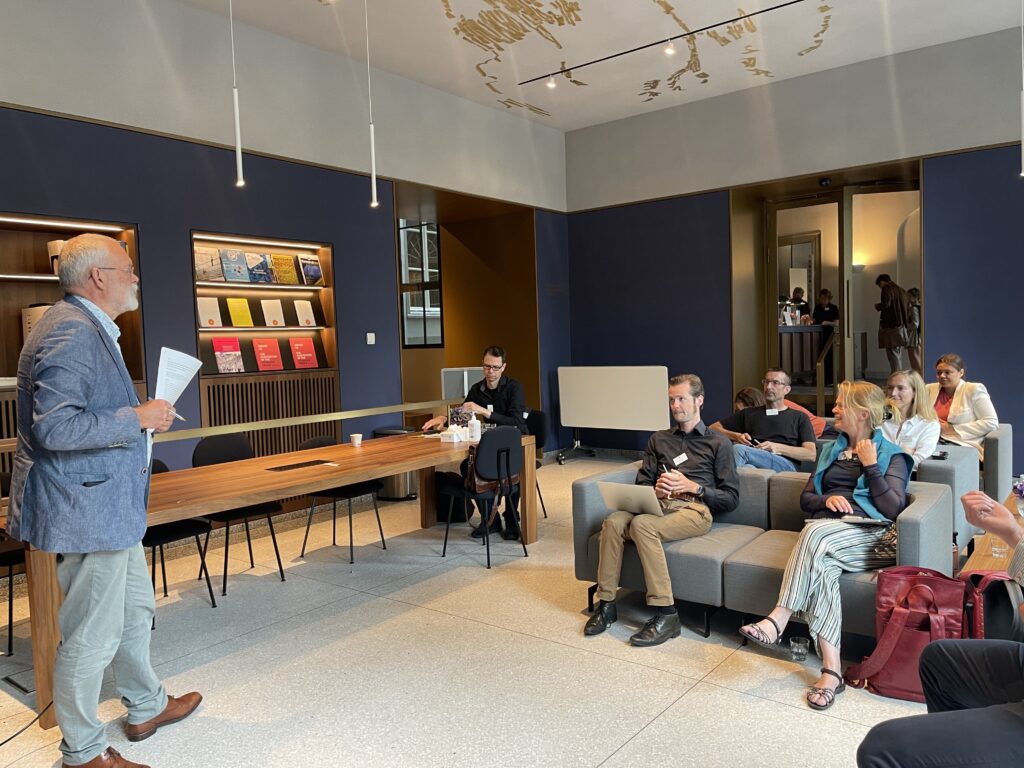Many higher education (HE) researchers study historical themes. They might, for example, examine the impact of historical changes, such as democratization, internationalization, the rise of the entrepreneurial university, or of New Public Management (NPM). Yet, there is little exchange of ideas and knowledge between historians and social scientists who do research on higher education. We believe that this should change. Therefore, we’ll present two ways how a HE scholar could use a historical approach in their work. If you are interested in including some history in your research project, you may want to keep reading.
We were motivated to write this post after having an enlightening conversation during an interdisciplinary panel called Making Sense of Universities in Contemporary History, which was organized as part of the international conference Political History Today in Amsterdam in June. The participation of social scientists and historians resulted in an engaging discussion from both a historical and social science perspective. Professor of University History Leen Dorsman (Utrecht University) chaired the session, and Professor of Higher Education Jeroen Huisman (Ghent University) reflected on the presentations as a commentator.
The panel discussion took place the iconic Trippenhuis. Due to the pandemic, many of us met physically for the first time. It was a pleasure to talk face-to-face about our common research interests. The beautiful weather, informal drinks, and the city tour most definitely contributed to the ambiance. In other words, excellent conditions to have a stimulating academic conversation. The two points below depart from this discussion and our reflections.

Using historical context as a flashlight to illuminate the diversity of HE
Historians emphasize the uniqueness of every past event. They do this by situating their research topic within its historical context, ranging from the international to the local level. By paying more attention to these unique circumstances, HE researchers can nuance their findings even further, deepen their understanding of historical change, and contribute to our knowledge of the diversity of higher education.
Let us look at Belgium as an example. Around the 1960s, the European academic landscape expanded rapidly in response to the increased interest in HE and scientific research in the context of the Cold War. In Belgium, the number of accredited universities and university institutions grew from about 11 in 1964 to 20 in 1971. Besides some shared motives with its neighboring countries, there were also many national differences. The case of Belgium shows that safeguarding the linguistic and ideological balance in HE was a unique political concern. This resulted in the establishment of numerous relatively small institutions, which all developed their own organizational identity.
Moreover, at the local level, we see university cities like Ghent, Leuven, and Antwerp having traditions and characteristics of their own, which also influenced the development of higher education institutions (HEIs) established there in different ways. For instance, Belgian universities protested quite peacefully against the harsh austerity measures introduced by the national government in July 1978, but in Ghent, student protests took a severe form. The university had a particularly critical and activist student community that can be related to the city’s dynamic. However, this is not to say that Ghent was always the exception regarding student demonstrations. Any generalization of historical developments should include the necessary nuances.

Focusing on historical actors to understand change
The second aspect of a historical approach we wish to address here relates to historical actors. By paying more attention to actors’ practices, beliefs, and motivations, relevant details of broader (inter)national changes can be revealed. After all, real people – ranging from ministers to rectors and academics – are the ones who initiate change in HE.
This is reflected in the rise of New Public Management in higher education. Consultants, senior administrators, and management personnel played a central role in circulating new NPM-style concepts, ideas, and techniques, which were used to transform HEIs, intending to make them more efficient and effective. For instance, these actors spread new techniques when they changed universities or government bodies, or in the case of consultancy work. Thus, by focusing on the involved key players, particularly on their language and actions, abstract changes such as ‘the rise of NPM’ become more concrete.
The Dutch case illustrates the importance of the role of historical actors in NPM change in HE. From the 1980s onwards, the Dutch Ministry of Education started to implement reforms to increase the academic systems’ efficiency, effectiveness, and performance. One of the key players involved in the early reform wave was the top civil servant Roel in ‘t Veld. Before joining the Ministry, In ‘t Veld had worked at Leiden University, where he was involved in several NPM-style organizational changes. When he moved to the Ministry, In ‘t Veld incorporated some of the techniques (e.g. performance-based research funding) he had used in Leiden into policymaking at the national level.
Looking at the institutional level, examining the role of actors within HEIs may reveal characteristics of NPM that are not apparent from national-level analyses. However, current literature on the rise of NPM in higher education mainly focuses on national regulation as a driver of NPM-style changes at the institutional level. But not all institutions responded in the same way. Actors at the institutional level “translated” system-level changes to their specific institution. Also, besides at the national level, these style changes were instigated at the institutional level by administrators and managers as well. For example, about a decade ago at Vrije Universiteit Amsterdam, the management concept operational excellence was adopted by senior administrators and used to transform the university’s business operations.
Incorporating a historical approach into your research
Even though we ourselves are of course particularly passionate about history and higher education, we’d like to encourage all HE scholars to consider a historical perspective. When examining (the impact of) changes in HE, two aspects of a historical approach mentioned above can help you with this: contextualization and focusing on historical actors. But how can you incorporate these in your research? Here are some suggestions:
Recognize contextual differences by asking questions such as:
- Does my case have analogies with past events? What are the differences and similarities?
- How and why is my case unique? Which specific political, economic, social, and cultural contextual factors make my case different from others in past and present?
Utilize historical sources that reflect the perspectives of historical actors, like interviews and archival sources (e.g., speeches, correspondences, research reports, policy documents).
Good luck, but most importantly, have fun discovering the history within your research!
Alexia Coussement is a Ph.D. student at Power in History – Centre for Political History (University of Antwerp). Her research interests range from contemporary university history to the broader field of the history of knowledge. Accordingly, she is a board member of Gewina, the Belgian-Dutch Society for the History of Science and Universities. Twitter: @AlexiaCouss
Floris van Berckel Smit is a Ph.D. student at the Vrije Universiteit Amsterdam (VU) and visiting scholar at the Centre for Higher Education Governance Ghent (Ghent University). His research interests focus on (the history of) higher education governance, (New Public) Management, political history, Learning Histories, and oral history. Twitter: @VanBerckelSmit
